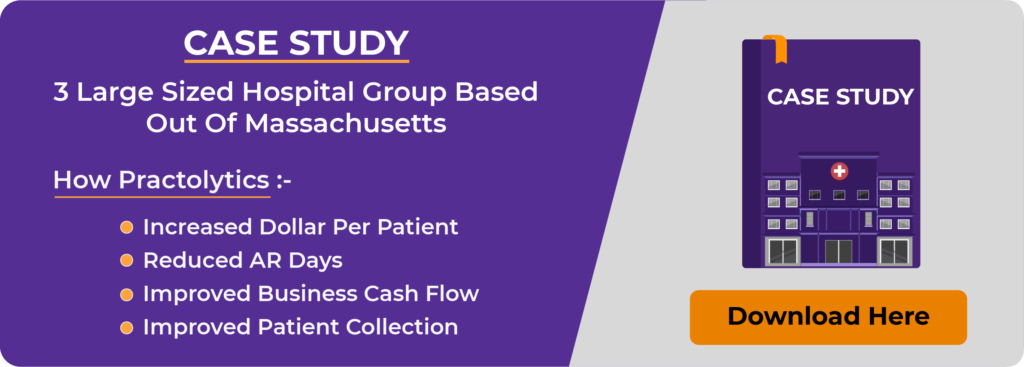Optimizing Telemedicine Reimbursements in Gastrointestinal Care: Addressing Constraints and Solutions
Optimizing Telemedicine Reimbursements in Gastrointestinal Care has shown a steep increase in leveraging telemedicine to deliver patient care. Technological innovations and the need for remote healthcare services accelerate it. This includes remote monitoring, consultations, and communication between healthcare providers and patients.
Telemedicine has become an essential healthcare channel, especially during a pandemic, delivering safe and ongoing care when in-person encounters are limited. Its significance continues even in the post-pandemic era, giving sustainable access and convenience, reducing the burden on healthcare firms, and acknowledging the need for successful patient care.
This blog post will navigate how telemedicine reimbursement policies affect Gastrointestinal care delivery, scrutinizing existing coverage policies and their impact on patients and healthcare providers. It will also address the constraints in equity and access, emphasizing how policies can be modified and enhanced to bring in fair availability of Gastrointestinal telemedicine services, especially for underserved communities.
Table of Contents
Telemedicine in Gastrointestinal Care
Telemedicine enables real-time communication and exchange of medical information without physical encounters. Telemedicine in gastrointestinal care can be used for:
- Primary consultations to identify symptoms and check if further treatments or tests are needed.
- Follow-up encounters to review results, oversee progress, and adjust treatments.
- Supervise GI conditions that are chronic like inflammatory bowel disease, liver disease, bowel syndrome, and such through virtual check-in and patient monitoring.
- Giving lifestyle and dietary advice to help them get through conditions like celiac disease, acid reflux, etc.
Benefits of Telemedicine for GI Patients
Increased access: Telemedicine allows patients to connect with specialists despite their geographical location, minimizing their need to travel and expanding their access to expert-delivered care. This is a crucial necessity for rural populations or underserved communities with a shortage of specialist care.
Convenience: Patients can benefit from care from specialists in the comfort of their homes, especially for those with mobility conditions. This convenience can go a long way to cut short the time and cost of traveling to healthcare practices, ensuring seamless access to patient appointments and sticking to proper treatment plans.
Enhanced follow-up and monitoring: Telemedicine caters to regular follow-up and monitoring for serious GI cases, bringing in timely management and interventions for patient health. Remote monitoring tools will help track patient symptoms, lifestyle factors, and medical adherence, delivering providers with necessary insights into patient conditions and helping them make informed decisions. Virtual follow-ups aid providers in acknowledging and minimizing the risk of further complications and physical hospital readmissions.
Current Telemedicine Reimbursement Policies
Medicaid and Medicare Telemedicine Reimbursement: Medicaid and Medicare have a comprehensive telemedicine coverage policy during the pandemic, compensating broad service ranges such as patient visits, chronic disease management, mental health encounters, and consultations.
Private Insurance Telemedicine Coverage: Private insurers have also modified their policies to allocate telemedicine services, delivering reimbursement for virtual encounters with providers.
Challenges with Current Policies
- Different insurance companies, governments, and state organizations have distinct policies and regulations on coverage for telemedicine, bringing in inconsistent access and coverage.
- Some policies refrain from coverage for specific medical conditions or patient visits, reducing access to extensive telemedicine treatment options.
- Some policies necessitate patients to live in a given geographical area and layout constraints on telemedicine encounters to designated healthcare firms, impeding access and healthcare flexibility for patients in underserved or rural locations.
Equity and Access Challenges
Disparities in Telemedicine Access
Socioeconomic Barriers: Financial constraints of patients can hinder their access to technological innovations and internet services needed for telemedicine consultations.
Geographic Disparities: Rural populations might face limited internet broadband infrastructure and healthcare clinics, impeding their access to telehealth services.
Internet Access: Rural areas may have limited broadband infrastructure and healthcare facilities, impacting access to telemedicine services.
Technological Challenges: Inconsistent access to smartphones and computers is another constraint to why people face access issues with telemedicine services.
Impact on Vulnerable Populations
- Low-income populations might have affordability constraints to get internet access, tools, devices, and data plans. This poses a barrier to telemedicine access.
- The non-tech savvy population or old age populations lack adequate familiarity with technology. This becomes a challenge while they explore the telemedicine option.
- Other cultural and language constraints remain significant challenges that prevent patients and healthcare providers from effective communication.
Strategies for Improving Equity and Access
Policy Recommendations
- Enabling adequate telemedicine coverage across various insurance providers to alleviate any disparities in access based on insurance policy type.
- Expanding telemedicine service scope under insurance policies and enabling more providers to deliver telehealth consultations.
- Eliminating constraints that limit telemedicine encounters, improving patient flexibility and provider locations.
Technological Solutions
- Investing in advanced infrastructure to enhance broadband access in underserved and rural populations to aid dependable telemedicine networks.
- Delivering incentives for patients to obtain essential telemedicine equipment like tablets and smartphones.
- Offering adequate training and resource allocation to healthcare providers and patients about leveraging telemedicine channels properly for effective utilization.
Community Outreach and Education
- Educate patients on the importance of telemedicine availability via outreach programs, provider communications, and community events.
- Educate and train providers on language accessibility, patient-centered services, and cultural competency to ensure equitable patient care leveraging telemedicine.
Successful Models of Telemedicine in Gastrointestinal Care
Rural Telemedicine Program
A healthcare system addressed the hurdle of shortage in access to specialists by implementing an extensive telemedicine approach. This allowed patients in rural populations to attain gastrointestinal care via virtual channels, catering to initial encounters, follow-ups, and remote monitoring for serious conditions. The results were noteworthy, with enhanced specialized care, minimized travel constraints, and seamless management of chronic GI cases without any requirement for long travels.
Urban Community Health Initiative
A health firm effectively integrated telemedicine into primary care services to facilitate underserved communities. This effectively targeted issues like digestive disorders via virtual consultations with GI specialists. By utilizing telemedicine, the health firm enhanced consistent care, improved patient engagement, and ensured proper interventions for acute GI cases, addressing healthcare discrepancies within the urban population.
From these successful case studies, we could gather several effective takeaways including proper patient outreach, education, and such to overcome the initial skepticism surrounding the first step and bringing extensive telemedicine adoption. Provider training and continuous assistance in telemedicine channels are essential to keep up high-quality patient care along with patient satisfaction. Integration of technological innovations into healthcare systems allows efficient workflows to come in place and shed light on seamless healthcare infrastructure. Setting out robust quality assurance regulations makes sure of proper patient care delivery and patient safety in telemedicine encounters.
Practolytics and Telemedicine Reimbursement Policies
Practolytics specializes in revenue cycle management (RCM) for healthcare practices, particularly in gastroenterology. Here’s how Practolytics can help navigate and improve telemedicine reimbursement policies:
Optimized Billing and Coding:
Coding Expertise: Practolytics ensures accurate coding for telemedicine services, aligning with evolving reimbursement guidelines. This expertise minimizes billing errors and ensures maximum reimbursement.
Compliance: Stay updated with the latest telemedicine reimbursement regulations to ensure compliance and optimize claims submission.
Revenue Optimization:
Claim Management: Efficiently manage claims submission and follow-up, maximizing reimbursement for telemedicine consultations and remote monitoring services in gastrointestinal care.
Denial Management: Proactively address claim denials and appeals, ensuring timely resolution and improved cash flow.
Financial Efficiency:
Financial Reporting: Provide comprehensive financial reporting and analytics tailored to telemedicine services, offering insights into reimbursement trends and financial performance.
Streamlined Processes: Implement streamlined processes for telemedicine billing and collections, reducing administrative burden and enhancing operational efficiency.
Expert Guidance and Support:
Consultative Approach: Offer expert guidance on navigating complex telemedicine reimbursement policies, assisting in policy interpretation and implementation within gastroenterology practices.
Training and Education: Provide ongoing training to staff on telemedicine billing best practices and compliance requirements, ensuring adherence to regulatory standards.
Integration and Technology Support:
Integration Solutions: Integrate with existing telemedicine platforms to streamline billing workflows and enhance data accuracy.
Technological Integration: Leverage technology solutions to enhance billing accuracy and efficiency in telemedicine encounters, ensuring seamless financial operations.
Conclusion
Choosing Practolytics as your RCM partner ensures a focused approach to addressing telemedicine reimbursement challenges in gastrointestinal care. By optimizing billing processes, ensuring compliance, and providing expert support, Practolytics helps gastroenterology practices maximize revenue, improve financial efficiency, and navigate evolving telemedicine reimbursement policies effectively. This partnership facilitates sustainable practice growth and enhances patient care delivery through enhanced financial management in telemedicine services.
ALSO READ – 9 Key Factors for Successful Transition to Telehealth Practice
Talk to Medical Billing Expert Today — Get a Free Demo Now!






